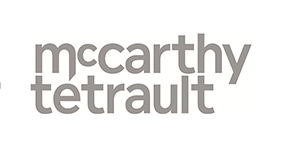Canadian income tax and sales tax had an eventful year in 2020, with several important legislative and judicial developments occurring over the last year. Canadian governmental reactions to the COVID-19 pandemic included federal and provincial initiatives to mitigate its economic impact, and the impact of these responses are likely to reverberate for years to come. We asked tax experts from McCarthy Tétrault to walk us through the tax changes Canada saw in 2020, and what they anticipate to see in 2021 and beyond. Additional information on this subject can be found in McCarthy Tétrault’s Tax Perspectives: Review of 2020 & 2021 Outlook.
What financial relief measures were put in place for employers and employees in 2020?
During 2020, the Canadian government formed an economic response plan (“Response Plan”) to support the Canadian economy during the COVID-19 global pandemic. Noteworthy measures aimed at providing relief to employers and employees include:
The Canada Emergency Wage Subsidy (“CEWS”) which allows eligible employers who suffer significant declines in revenue to keep Canadian employees on the payroll, and to bring Canadian employees who were laid off back onto the payroll. CEWS amounts are based on the employer’s decline in revenue for the particular period, and are currently scheduled to end in June 2021, with details for periods following March 13, 2021 to be proposed at a later date.
The Canada Recovery Benefit (“CRB”) is for workers not eligible for Employment Insurance (“EI”) (e.g., self-employed, contract, etc.). Available from September 27, 2020 to September 25, 2021, the CRB provides $500 per week to individuals for up to 26 weeks.
The Canada Emergency Response Benefit (“CERB”) supports eligible workers, including seasonal workers and unemployed individuals who have exhausted their EI benefits and were unable to re-join the workforce due to the pandemic. The CERB provided $2,000 per four-week period for up to 28 weeks, from March 15, 2020 until September 26, 2020. Payments under the CERB are a taxable benefit and must be reported in income. Workers could not receive both EI and the CERB for the same period, and employees were not eligible for both the CEWS and CERB for the same period.
Home Office Expenses may be eligible for deduction on an employee’s 2020 income tax return if certain requirements are met. Under a new temporary flat rate administrative measure, employees who worked from home more than 50% of the time over a period of at least four consecutive weeks (a shorter qualifying period than the ordinary practice) in 2020 due to COVID-19 may deduct from employment income $2 for each day they worked from home in 2020 due to the COVID-19 pandemic, up to a maximum of $400. The Canada Revenue Agency will not require a Form T2200 or Form T2200S completed and signed by their employer. Under the rules in the Income Tax Act (Canada) (“ITA”) there is no $400 cap. If an employee intends to deduct more than $400 in a year, a simplified Form T2200S and Form T777S is available in addition to the regular Form T2200.
The Canada Emergency Rent Subsidy (“CERS”) program, enacted on November 19, 2020, is intended to provide support to qualifying renters and property owners, retroactive to September 27, 2020. Administered by the CRA, it provides direct rent and mortgage support on a sliding scale, covering up to a maximum of 65% of eligible expenses, with an additional 25% “lockdown support” top-up potentially available where public health restrictions apply. The Government’s Fall Economic Statement 2020 proposed to extend this measure to March 13, 2021.
What other legislative changes in 2020 affected Canada’s Income Tax Act?
Limits on Employee Stock Options
When a Canadian resident employee’s stock option is cashed out, the employee receives an employment benefit equal to the cash-out amount. In the case where the option is exercised, the benefit is equal to the fair market value of the acquired share minus the exercise price paid by the employee.
Where the options are issued by a corporation or a mutual fund trust (and certain conditions are met) the employee is entitled to a deduction equal to 50% of such employment benefit (“50% Deduction”) such that the employee is taxed at a rate equivalent to the Canadian capital gains rate.
The Fall Economic Statement 2020 indicated that the Government intends to implement limitations on the amount of employee stock options that may be eligible for the 50% Deduction.
The new rules will:
- Only affect options granted after June 30, 2021;
- Impose a $200,000 annual vesting limit (based on the value of an option’s underlying shares at the date of grant) on options that can qualify for the 50% Deduction; and
- Provide the employer with a deduction for the amount of the stock option benefits that exceed the new annual vesting limit, subject to certain conditions.
Additionally, employers can elect to have this tax treatment apply for stock options below the $200,000 threshold. These rules will only apply to options issued by an employer that:
- is a mutual fund trust or a corporation, other than a Canadian-controlled private corporation; and ·
- has consolidated group gross revenues greater than $500 million.
New Disclosure Requirements for Nominee Agreements in Québec
On September 24, 2020, new legislation was passed to amend the Taxation Act (Québec) to require parties to a nominee agreement made as part of a transaction, or a series of transactions, to disclose the nominee arrangement to Revenu Québec by filing a TP-1079.PN information return. Under a nominee agreement, a nominee agrees to act as agent for a principal (e.g., when the nominee holds legal title to a property for the owner of the property, and the owner retains beneficial ownership of the property).
Disclosure is mandatory for agreements entered into after May 16, 2019, or agreements entered into prior to May 17, 2019, but in respect of which the tax consequences continue after May 16, 2019. Disclosure made by one party is deemed to have been made by the other party as well. If a partnership is a party, all partners must make the disclosure, except in the case of a limited partnership wherein only the general partner is required to make the disclosure. The TP-1079.PN return must be filed with the nominee agreement attached on the later of: (i) 90 days after the date on which the nominee agreement was concluded; and (ii) December 23, 2020. Failure to file may attract penalties of up to $5,000, for which the parties are jointly liable and the suspension of the normal reassessment period in respect of the transaction or series of transactions.
How is the federal government addressing taxation of the digital economy?
As part of the global trend to tax the digital economy and with the increasing importance of e-commerce, especially since the beginning of the COVID-19 pandemic, the government announced in its Fall Economic Statement 2020 its intention to enact new GST/HST registration and collection requirements for non-resident vendors and digital platform operators effective July 1, 2021. The new proposed rules virtually mirror those adopted in Québec almost two years ago for QST purposes regarding supplies made to Québec consumers by foreign suppliers and operators of digital accommodation platforms.
New GST/HST Registration and Collection Requirements for E-Commerce Businesses
In addition to the obligation on Canadian vendors, non-resident vendors and distribution platform operators would be required to register, collect, and remit applicable GST/HST on all taxable supplies of digital products and services made or facilitated to Canadian consumers to the extent the total of such taxable supplies exceeds, or is expected to exceed, $30,000 over a 12-month period. This includes sales of goods by non-resident vendors (through distribution platforms or on their own behalf), where the goods are located in fulfilment warehouses in Canada or shipped from a place in Canada to a purchaser in Canada.
Similar rules are proposed for accommodation platform operators who facilitate or expect to facilitate over a 12-month period more than $30,000 in taxable supplies of short-term accommodations in Canada where the underlying third-party suppliers/owners of the accommodations are not registered for the GST/HST under the usual GST/HST regime. Under the new measures, discretionary authority is granted to the CRA to disclose, in any manner that the CRA considers appropriate, the name of any person registered under this new simplified GST/HST registration regime, including their effective date of registration. In certain circumstances, the proposed new rules require disclosure and record keeping, including filing an annual information return with the CRA.
What new tax measures are anticipated for 2021?
In 2021, there may be significant federal tax measures including:
- Rules affecting interest deductibility;
- Increased auditing to combat international tax evasion and aggressive tax avoidance (including consultations to modernize Canada’s anti-avoidance rules);
- Imposing tax on corporations providing digital services, with effect from January 1, 2022, which would apply until such time as an acceptable common OECD approach comes into effect; and
- Expanded foreign affiliate reporting rules for multinational corporations.
The federal deficit is expected to be approximately $382 billion in 2020-21. It is estimated by the government that these proposed measures will increase federal revenues by over $2.5 billion over five years, starting in 2021- 2022.
***
Contributing McCarthy Tétrault authors: Raj Juneja, Fred Purkey, Steve Marshall, Kassandra Grenier and Emily Leduc Gagne





